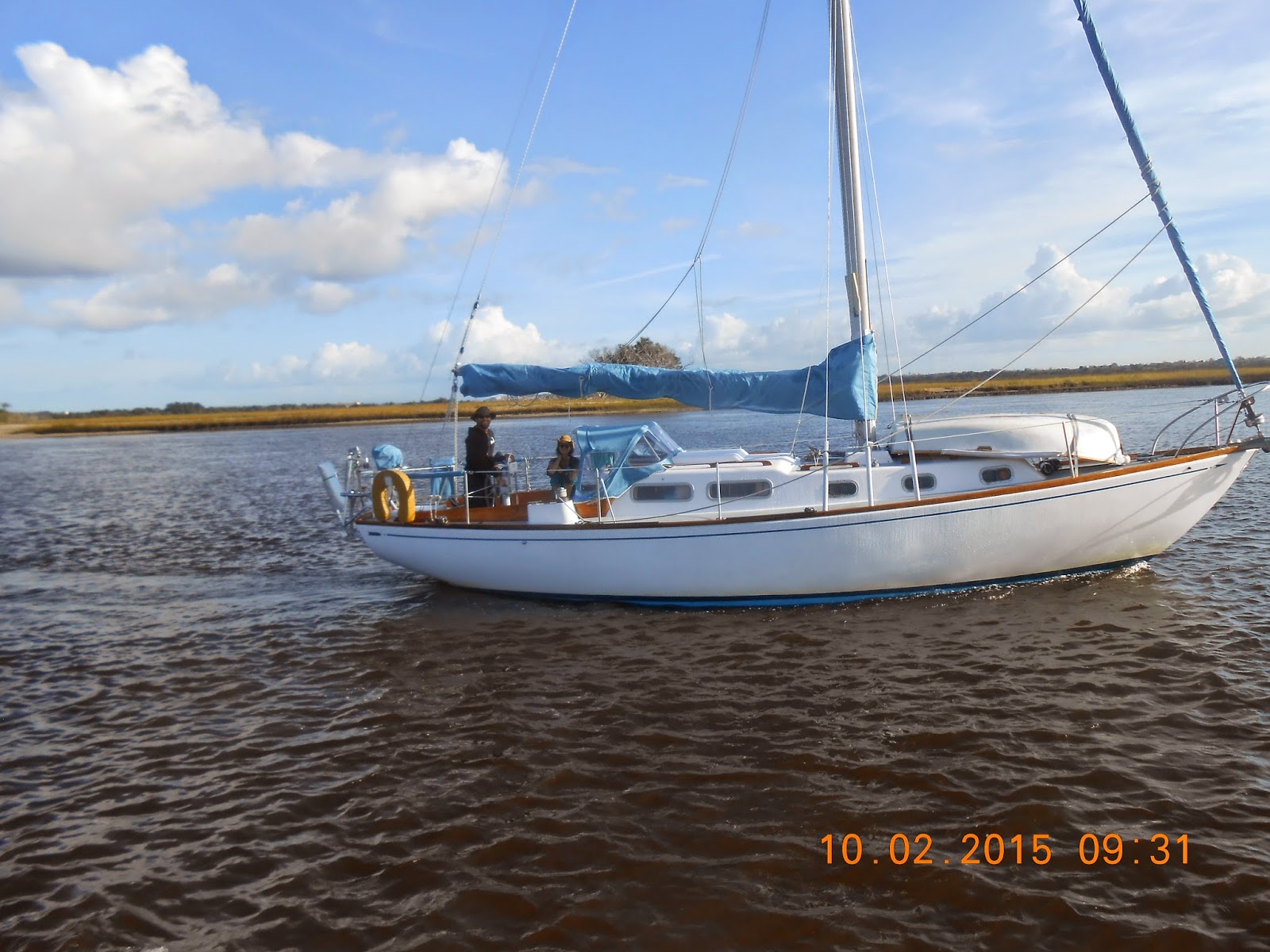Jon and Ashley on Baby Blue
0900 – Entering St Johns River – major shipping route
between Atlantic and Jacksonville just to our west. Passed several big boats
and docking facilities.
0930 - Leaving St Johns with a strong contrary tide – doing
3 knots and – OH NO – ran up on a shoal – visions of Beaufort dancing in my
head but fortunately quick thinking and probably mostly luck we were able to
back off. Whew!!
1000 – Passed under fixed bridge at Salamander Landing
fighting a very strong current creating standing waves -down to 2 knots.
Dangerous passage, best done at slack tide which it definitely is not right now
– note to self – on the way back through – do it slack.
1030 – First BND (bottle nose dolphin) of the day. Just made
reservations at River’s Edge Marina – ain’t our devices grand.
1100 – Passing Mayo Clinic of Florida.
1315 – Cruising down Tolomato River toward St Augustine
through beautiful salt water marsh – low tide – extensible oyster reefs, great
blues, groups of white pelicans, many shore birds, BNDs.
These reefs remind me
of what I have read about Chesapeake Bay oyster reefs of yesteryear when
apparently they were so extensive they were considered a navigational hazard –
but we took care of that – we just scrapped (dredged) them all up over the past
50 years or so. A combination of naturally occurring diseases is oft blamed for
the oysters demise in the Bay but pollution, primarily excessive sediment
deposition, and over harvest have in recent years (along with the diseases)
contributed to the lowest recorded population levels of the American oyster, Crassostrea
virginica, ever in the Chesapeake Bay.
Not only did we over fish but we did not
put back the harvested oyster shell – the very substrate that oyster larvae
attach to in their normal life cycle- the very foundation of their tenuous
homes. Seeing all these oyster reefs down this way gives me hope, but this is a
very different sort of salt water environment. Strong tides create a constant
washing out effect here, probably contributing to pretty good water quality.
The Chesapeake Bay is an estuary with many large fresh water rivers providing
hugh inputs of sediment and other pollutants. I suspect there is not the same
‘flushing’ effect in the Bay as one finds here.
Of course there are oysters
coming out of the Bay – farm raised – which is not a bad thing certainly – but
the simple, inescapable fact is that conditions are not yet ideal for robust natural
recruitment of the native oyster into its native habitat. Thanks to lots of
people involved in a broad range of ecological restoration activities there
might be a day when the American oyster may find its old home in the Chesapeake
Bay more hospitable. This subject may not be of interest to those who can’t
stand the thought of a slimy raw oyster slithering down your throat but try to look at the larger picture - the impact of human activities on other species that are - like us - trying to make a living.
1400 – Port side – derelict sailboat high and dry in the
marsh with a bald eagle sitting atop the mast
1500 – Crossed inlet and coming into St Augustine.
1622 -Tied up at River’s Edge Marina where Paul came out to
help us get steeled in. Gave us an ‘all day’ happy hour discount card for
Hurricane Patty’s – the local watering hole. Gave us shore power free. Provided
a complimentary bike for me to get to and fro and pointed us toward the showers,
washing machines and ships store.
We came from Fernandina Beach at mile 716 to St. Augustine
at 779 for a 61 mile day. Gonna stay here for a couple days – need supplies,
few hardware items and various hints suggest showers might be appropriate. St.
Augustine awaits.



No comments:
Post a Comment